10 Best Patient Monitors for Critical Care
An in-depth look at the top patient monitoring systems for critical care settings
- Anthony Arphan
- 12 min read
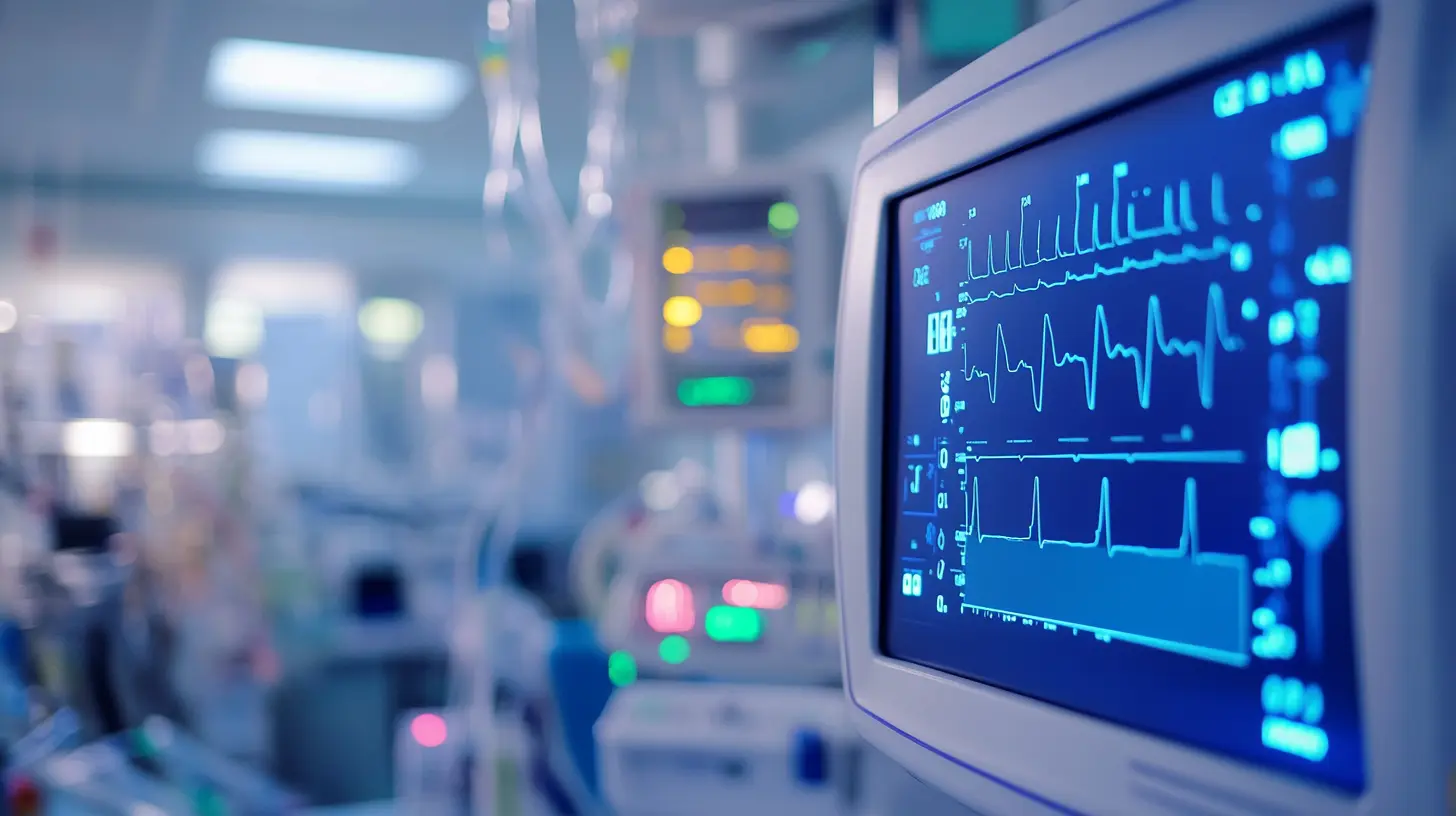
Ever stood in an ICU and wondered how those beeping, flashing monitors actually work? Or which ones you should consider for your hospital? You’re in the right place.
In critical care, patient monitors are more than just machines – they’re extra sets of eyes and ears for vigilant healthcare teams. When a patient’s condition can change in seconds, having reliable, real-time insights isn’t just convenient – it’s essential.
Today I’m walking you through the ten best monitors specifically designed for high-acuity settings. Let’s cut through the marketing speak and get to what really matters.
1. GE Healthcare CARESCAPE B650
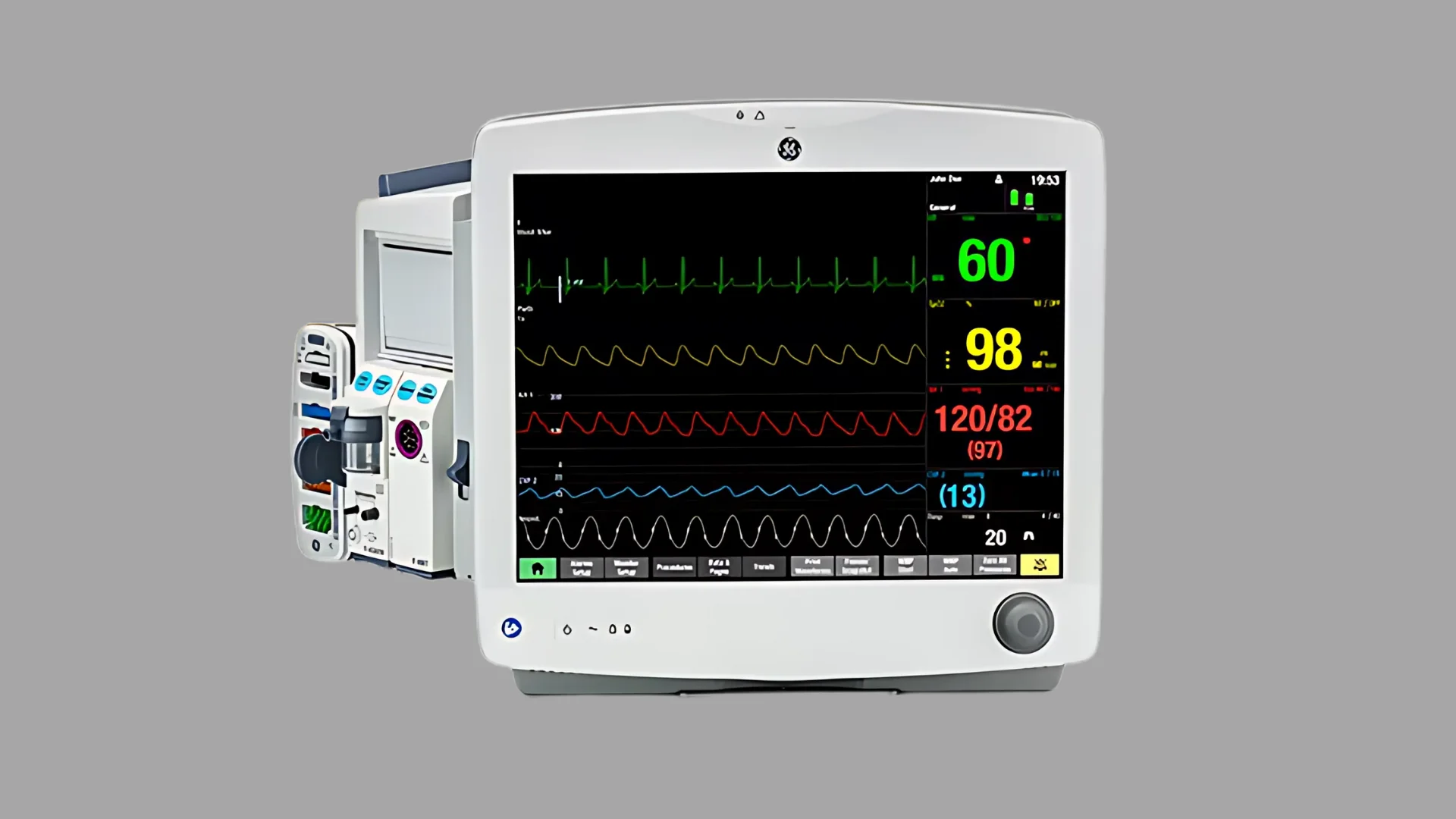
GE Healthcare CARESCAPE B650
If you need a monitor that just works – consistently and accurately – the CARESCAPE B650 deserves your attention.
Why you’ll love it:
- Easy to use: 15-inch touchscreen with a trim knob that’s intuitive enough for even temporary staff
- Cardiac powerhouse: Integrates with GE’s MUSE™ system for precise 12-lead EKG analysis right at the bedside
- Works with everything: Open architecture means it plays nice with your existing hospital systems
- Smart alarms: Adjustable thresholds reduce those middle-of-the-night false alarms
- Adapts to different patients: From NMT to entropy to regional oximetry – it’s remarkably versatile
What really sets this monitor apart is the portable patient data module. When you’re transferring patients between departments, you’ll get uninterrupted data flow – no gaps in monitoring, no lost information.
Is it the flashiest option? No. But if you want rock-solid reliability and comprehensive monitoring capabilities, the B650 delivers.
🔗 More details on GE Healthcare CARESCAPE B650
2. Philips IntelliVue MX750
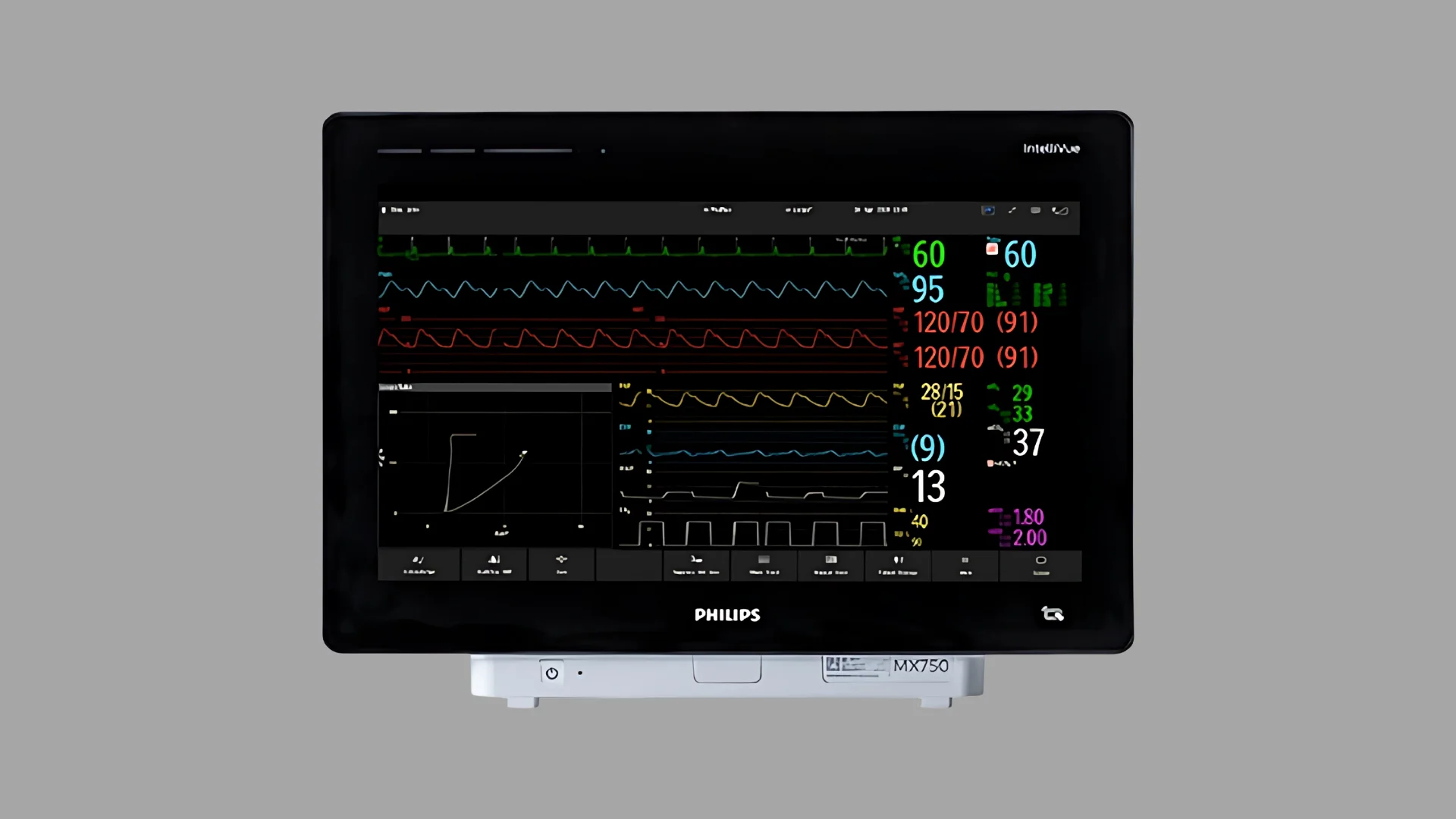
Philips IntelliVue MX750
In today’s world of increasing healthcare cybersecurity concerns, the Philips IntelliVue MX750 stands out as a fortress of data protection without sacrificing clinical performance.
Why it’s impressive:
- Crystal clear visuals: 19-inch Full HD touchscreen displaying up to 12 waveforms simultaneously
- Fort Knox-level security: End-to-end encryption, clinician authentication, and secure device protocols
- Seamless integration: Works flawlessly with Philips’ broader ecosystem of clinical information systems
- Build what you need: 8 module slots for customization across different specialties
- Computer inside: Optional integrated PC lets you access EMR data right from the monitor
The standout feature? The X3 transport monitor that detaches for patient transfers. Just unplug it, move with your patient, and plug back in at the destination – all while maintaining continuous monitoring.
If your IT department has significant input in your monitoring decisions, this system will make them smile.
🔗 More details on Philips IntelliVue MX750
3. Dräger Infinity Acute Care System
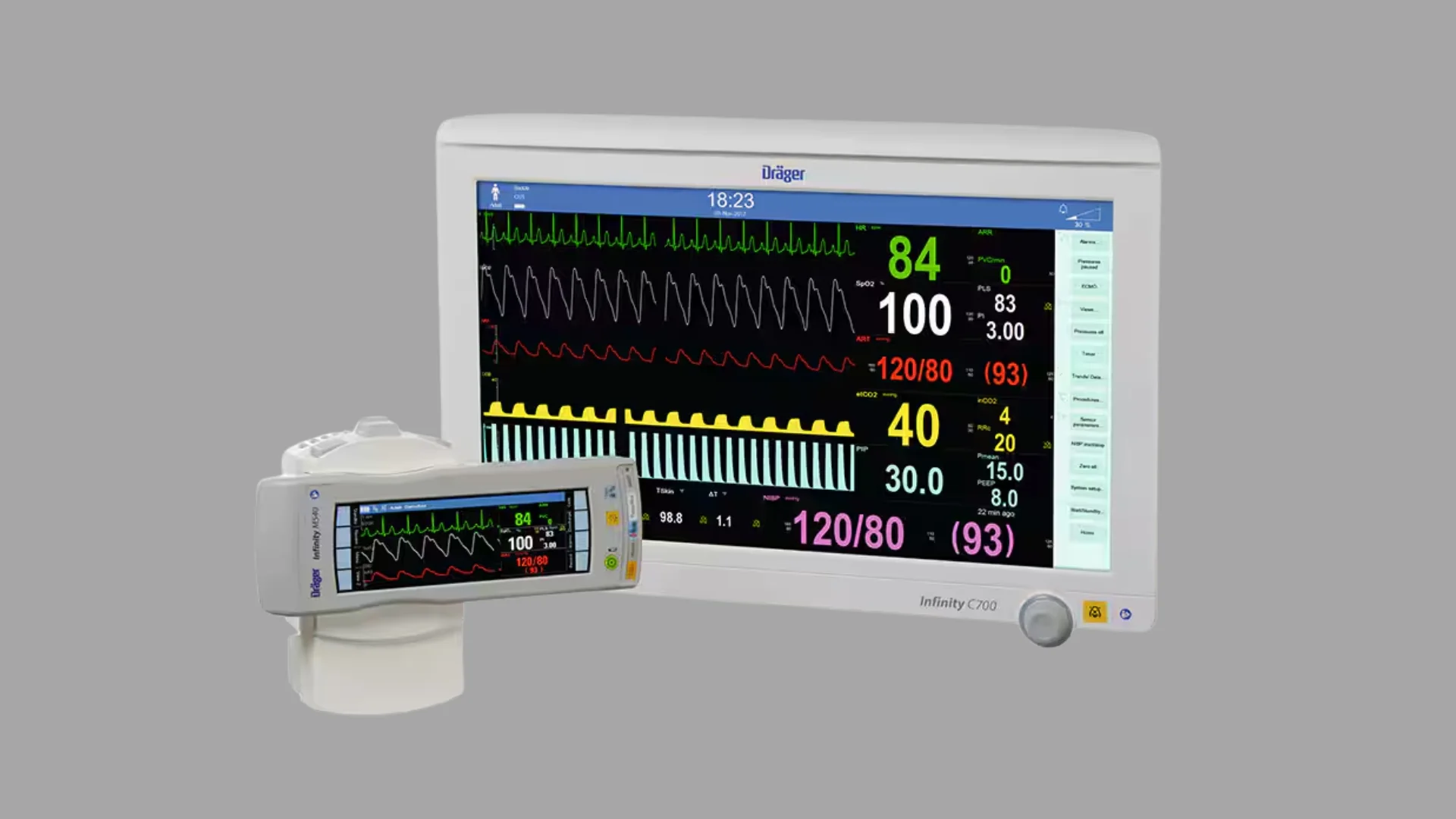
Dräger Infinity System
Looking to standardize monitoring across your entire facility? The Dräger Infinity system might be your answer.
Why it’s different:
- Follows the patient everywhere: The M540 monitor stays with patients throughout their entire hospital journey
- One platform to rule them all: Scalable architecture adapts to different care settings
- Decision support included: The Medical Cockpit workstation brings EMR access and clinical tools together
- Plays well with others: Seamlessly connects with Dräger’s ventilators and anesthesia systems
- Make it yours: Up to 16 customizable screen views for different clinical scenarios
Perhaps most impressive is the system’s ability to store 96 hours of trends, 150 clinical events, and 72 hours of portable monitoring data. This gives you comprehensive insight into a patient’s story, not just isolated snapshots.
If consistency across departments is your priority, this system deserves serious consideration.
🔗 More details on Dräger Infinity Acute Care System
4. Mindray BeneVision N22
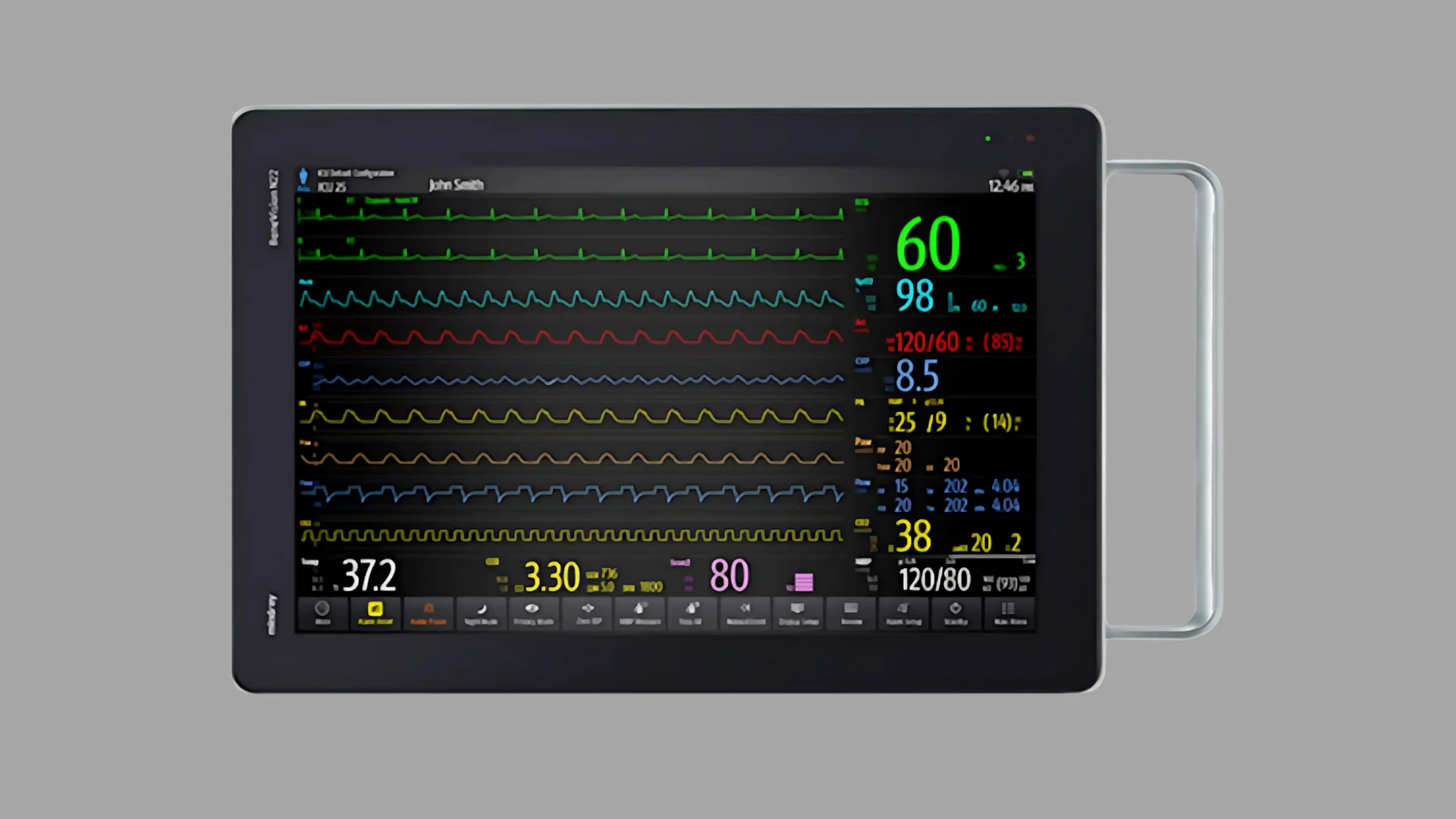
Mindray BeneVision N22
Think patient monitors have to be boring? The Mindray BeneVision N22 will change your mind with its innovative approach to data visualization.
What makes it special:
- Rotate as needed: The 22-inch ultra-HD screen switches between landscape and portrait orientations
- Advanced parameters: Supports everything from regional oximetry to PiCCO to BIS
- Hospital systems at bedside: iView clinical informatics brings PACS, LIS, and EMR to the point of care
- Visual alarm notifications: Infographic alerts reduce cognitive load during high-stress situations
- Environmentally friendly: Fanless cooling and low power consumption design
I’ve seen clinical staff fall in love with the rotating display. In landscape mode, you get a wide view of waveforms; in portrait, you see more parameters and longer trend data. It’s a simple idea that makes a surprising difference in usability.
For units seeking the perfect balance of innovation and practicality, the N22 delivers both.
🔗 More details on Mindray BeneVision N22
5. Nihon Kohden Life Scope G9
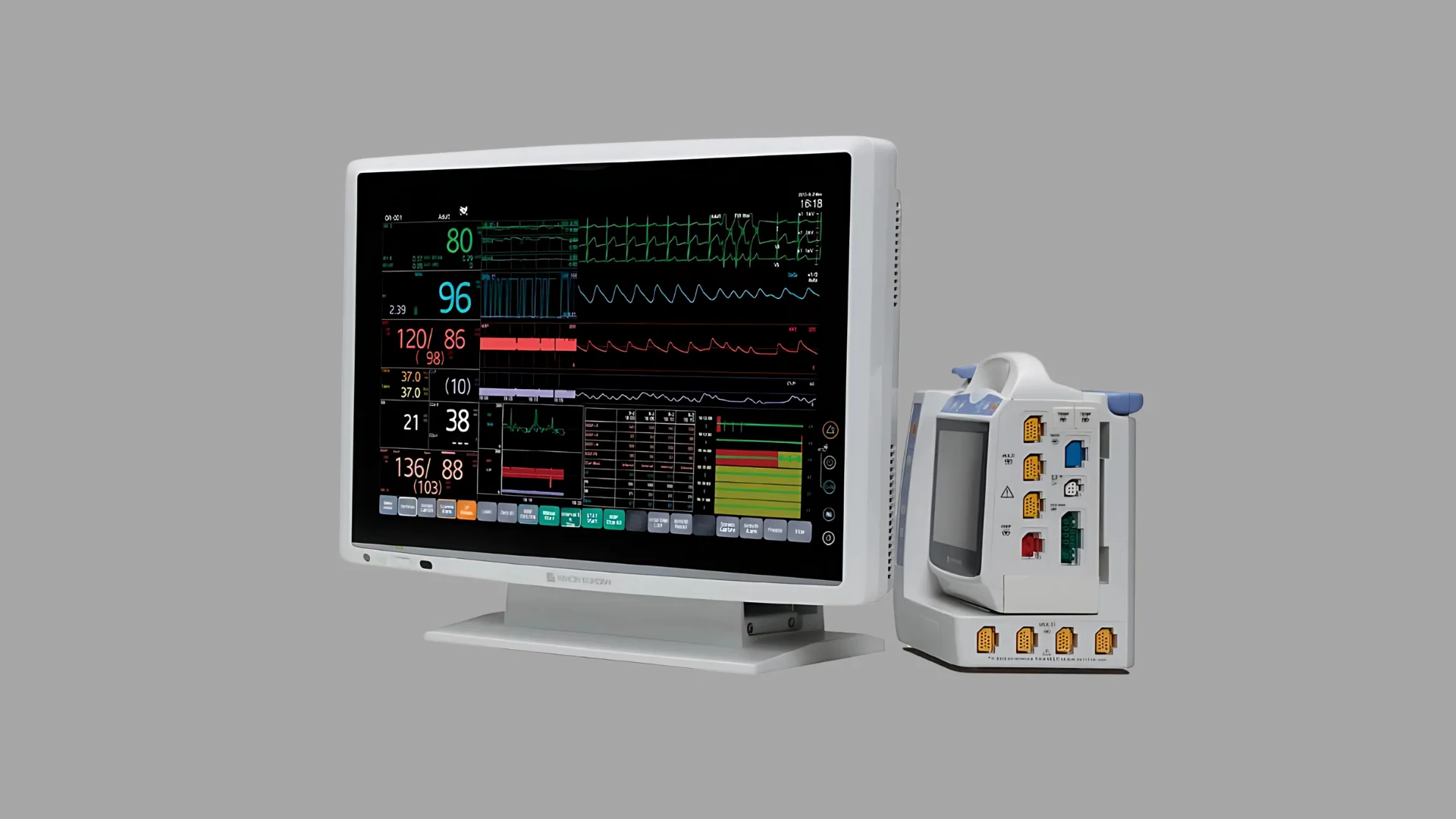
Nihon Kohden Life Scope G9
If flexibility and customization are top priorities, the Nihon Kohden Life Scope G9 offers a level of personalization that’s hard to match.
Why teams love it:
- Multi-screen mastery: Supports up to three independent, interactive screens
- Impressive cardiology tools: Advanced arrhythmia detection with A-Fib identification
- No-compromise transport: Life Scope PT ensures monitoring continuity during patient transfers
- Smart Cable™ innovation: Quick parameter switching without module swaps
- Isolation-friendly: NK-HealthProtect™ allows monitoring outside infectious disease rooms
The drag-and-drop interface for screen customization is remarkably intuitive. Clinicians can set up displays that match their workflow within minutes, not hours.
For hospitals that value giving clinicians control over their monitoring experience, the Life Scope G9 is a standout option.
🔗 More details on Nihon Kohden Life Scope G9
6. Welch Allyn Connex Spot Monitor
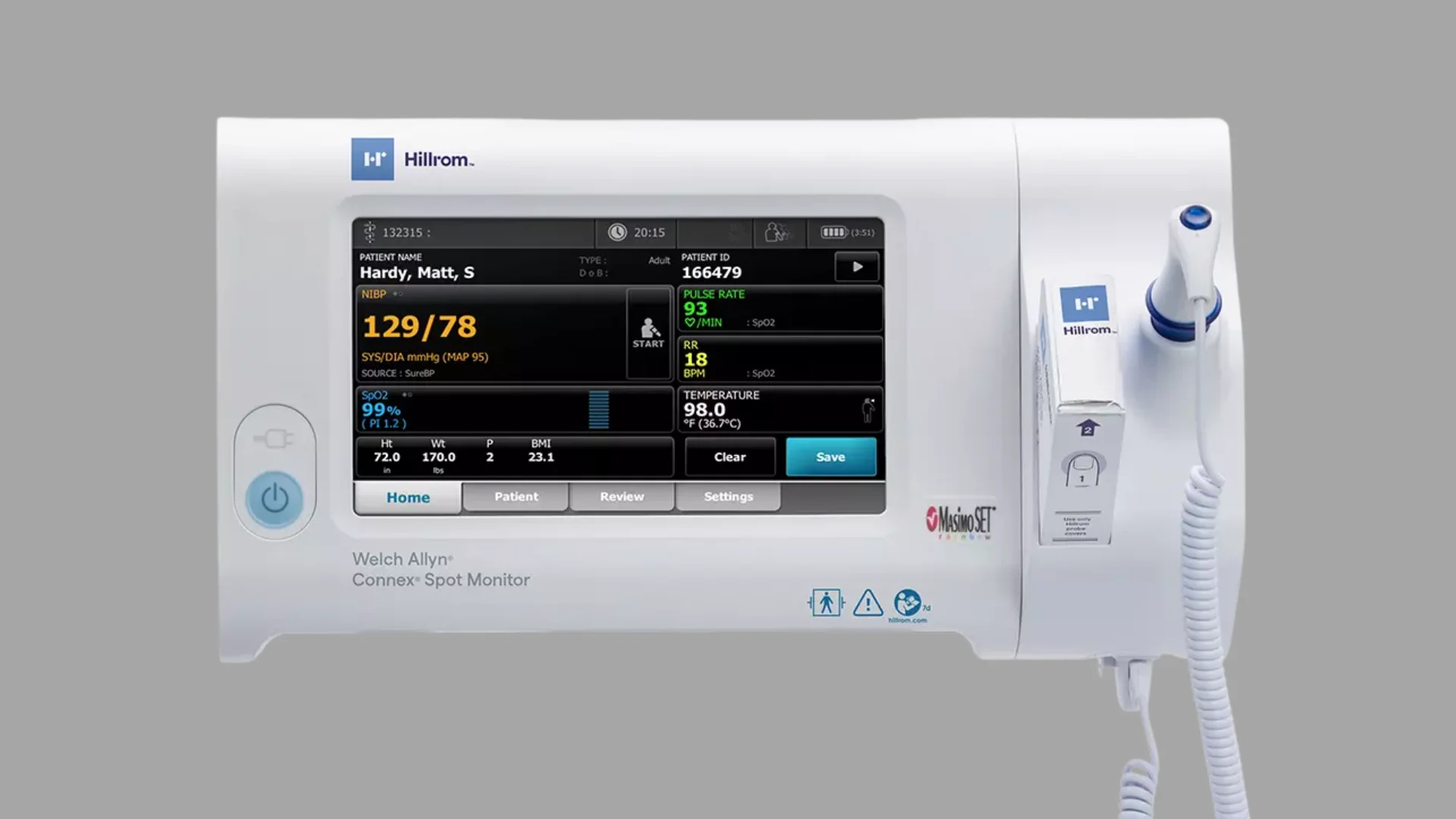
Welch Allyn Connex Spot Monitor
Not every monitoring need requires a complex, multi-parameter system. For general floors, clinics, and routine vital checks, the Welch Allyn Connex Spot Monitor delivers impressive efficiency.
Why it’s a favorite:
- Lightning-fast BP: SureBP® technology captures readings in under 20 seconds
- Flexible workflow: Document everything from height and weight to pain scores
- Temperature options: Choose the method that works best for your patients
- Pulse ox flexibility: Works with Masimo®, Nellcor®, or Nonin® SpO₂ technologies
- Early Warning Scores: Optional configurations help identify deteriorating patients
What really impresses me about this system is the Imprivata® badge tap integration. The single sign-on capability saves significant time throughout a shift – tap and go, rather than typing credentials repeatedly.
For routine monitoring outside high-acuity areas, this system strikes the perfect balance of functionality and simplicity.
🔗 More details on Welch Allyn Connex Spot Monitor
7. Spacelabs Xprezzon
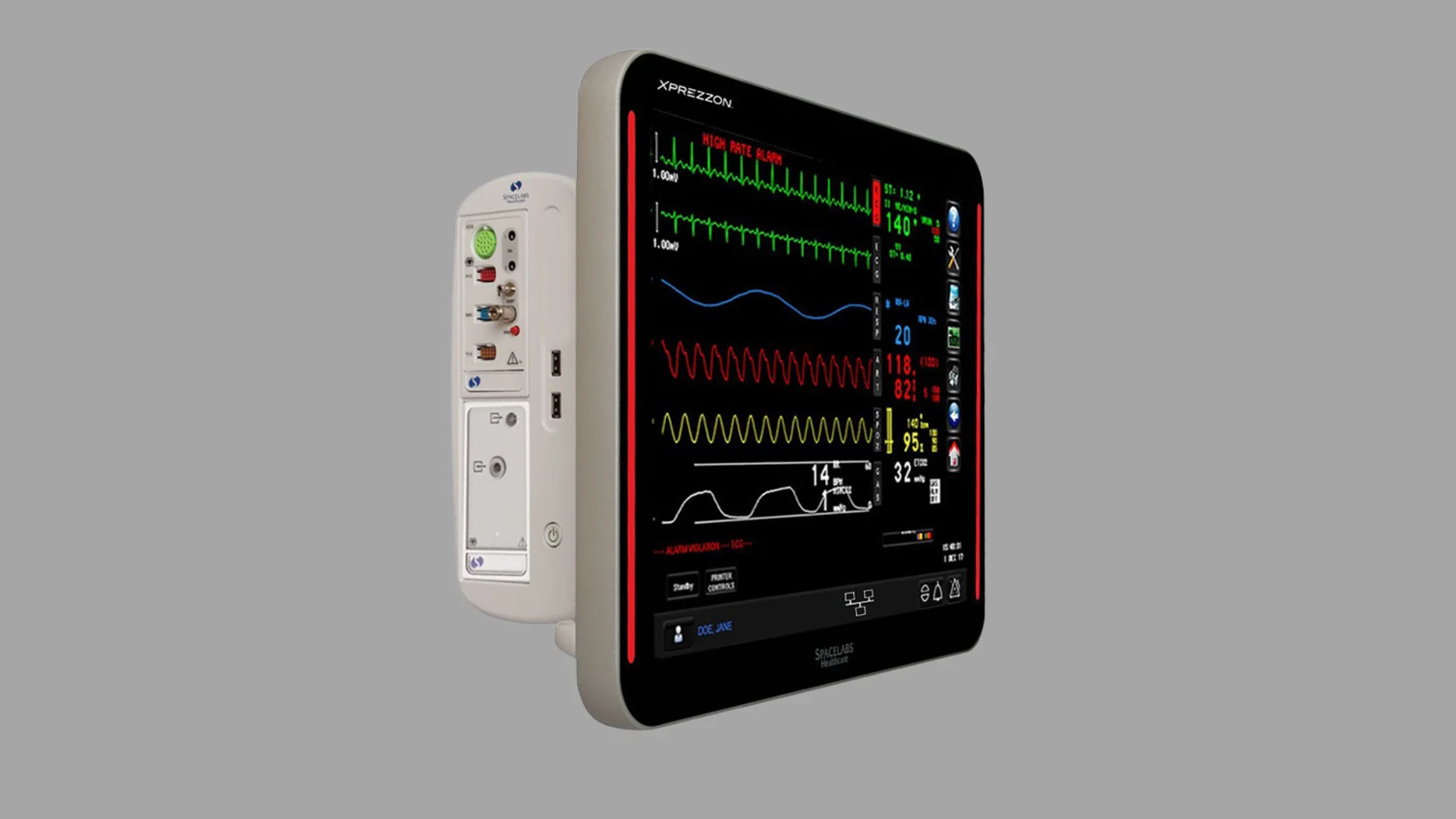
Spacelabs Xprezzon
Who says medical equipment can’t look good? The Spacelabs Xprezzon combines elegant design with serious clinical capabilities.
Why it stands out:
- Sleek, cleanable design: Frameless 19" touchscreen minimizes infection control concerns
- Visual alarm awareness: Integrated front and rear LED alarm lights for 360° visibility
- Data preservation: Stores up to 96 hours of trends for comprehensive review
- Mobile access: View patient data on smartphones and tablets via Intesys Clinical Suite
- Organized workspace: Thoughtful cable management and mounting solutions
The dual-display option is particularly clever, allowing separation of physiologic data from clinical documentation – perfect for detailed charting without losing sight of critical parameters.
For units where aesthetics and infection control are priorities alongside clinical performance, the Xprezzon delivers on all fronts.
🔗 More details on Spacelabs Xprezzon
8. Medtronic LIFEPAK 15
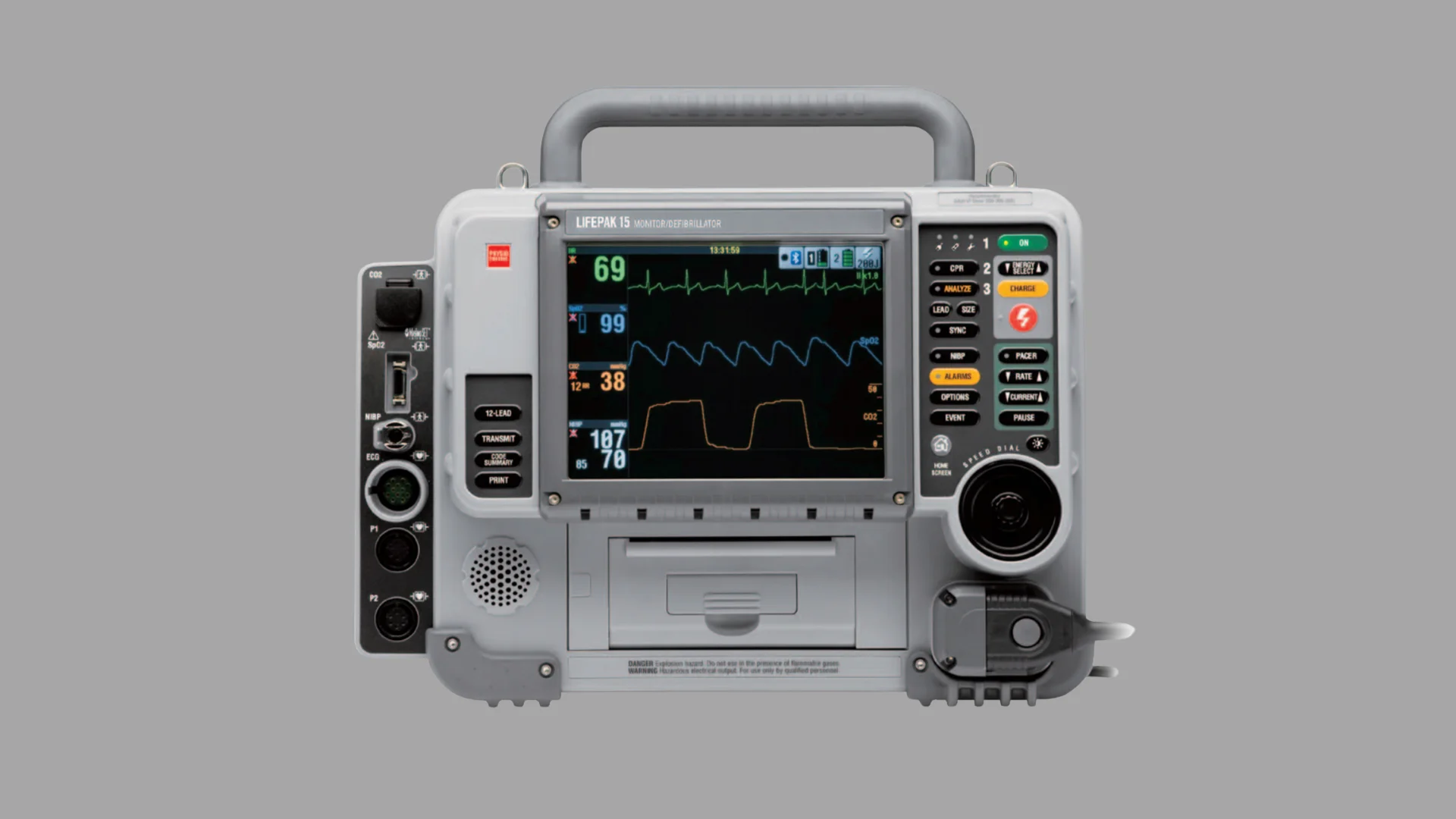
Medtronic LIFEPAK 15
When emergency situations demand immediate action, the Medtronic LIFEPAK 15 combines monitoring and intervention in one rugged package.
Why emergency teams trust it:
- Powerful defibrillation: Up to 360J of biphasic energy for difficult cases
- Advanced ECG analysis: Continuous 12-lead monitoring with the Glasgow Algorithm
- Built for punishment: Shock-absorbing handles and reinforced connections
- Always ready: Dual-battery system and automatic self-testing
- Visibility in chaos: Anti-reflective screen with high-contrast mode
The real-time data streaming to hospital teams via LIFENET Care can dramatically improve care handoffs. When minutes matter, this feature alone can make a critical difference in patient outcomes.
For emergency departments, transport teams, and rapid response units, this monitor/defibrillator hybrid is purpose-built for your toughest challenges.
🔗 More details on Medtronic LIFEPAK 15
9. Edan iM70
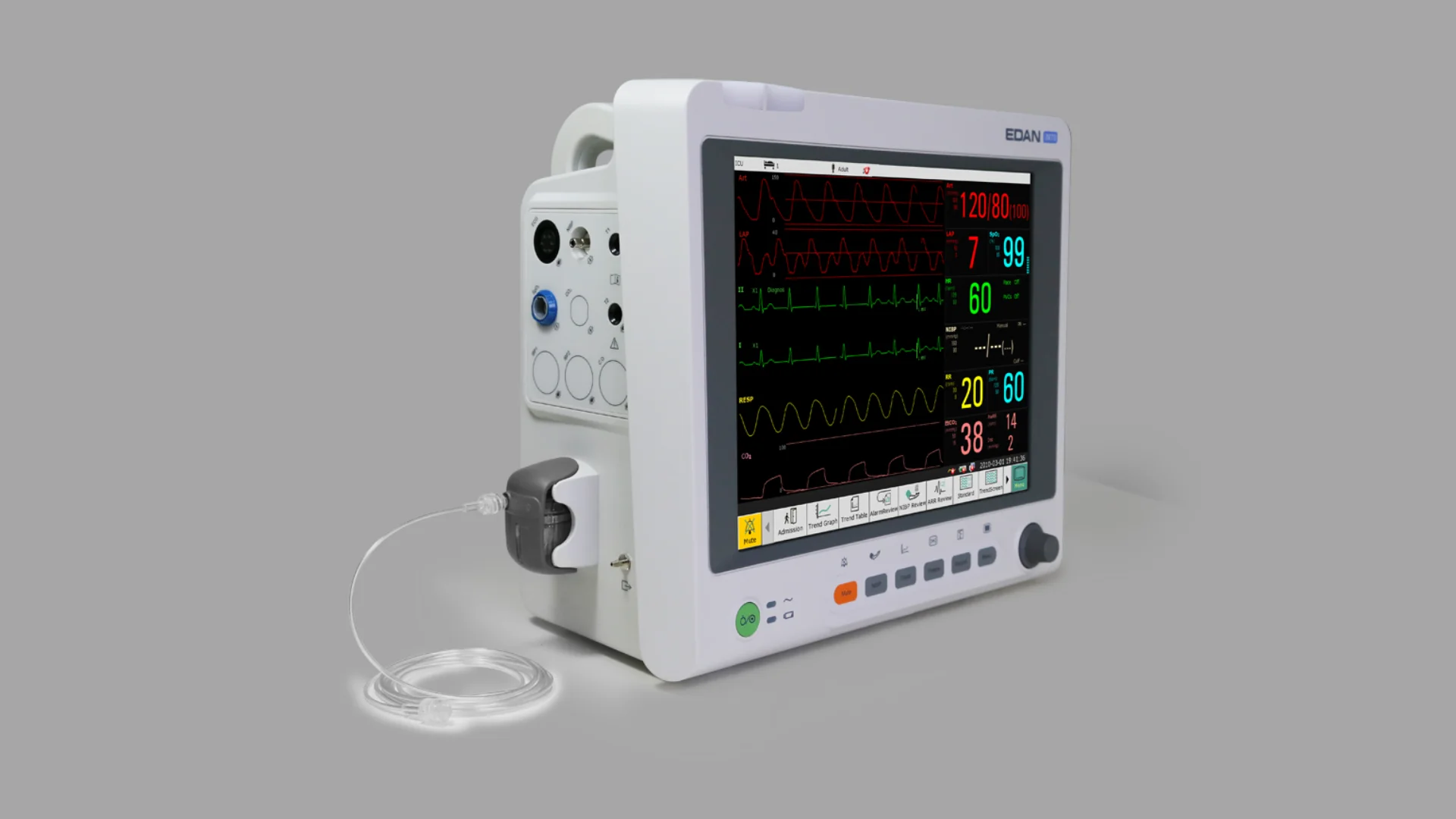
Edan iM70
Quality monitoring doesn’t always require breaking the bank. The Edan iM70 delivers solid performance at a more accessible price point.
What you’ll appreciate:
- Bright, clear display: 12.1" high-resolution color screen
- Core parameters covered: ECG, RESP, NIBP, SpO₂, Temperature, and PR
- Expandable capabilities: Optional modules for CO₂, multi-gas, IBP, and more
- Good data retention: 120-hour trend storage
- Multiple mounting options: Bedrail hook, rolling stand, or wall mount
The no-fan design is particularly noteworthy for patient comfort – one less noise source in already-busy clinical environments.
For facilities with budget constraints that can’t compromise on monitoring quality, the iM70 delivers impressive value.
10. Masimo Radical-7
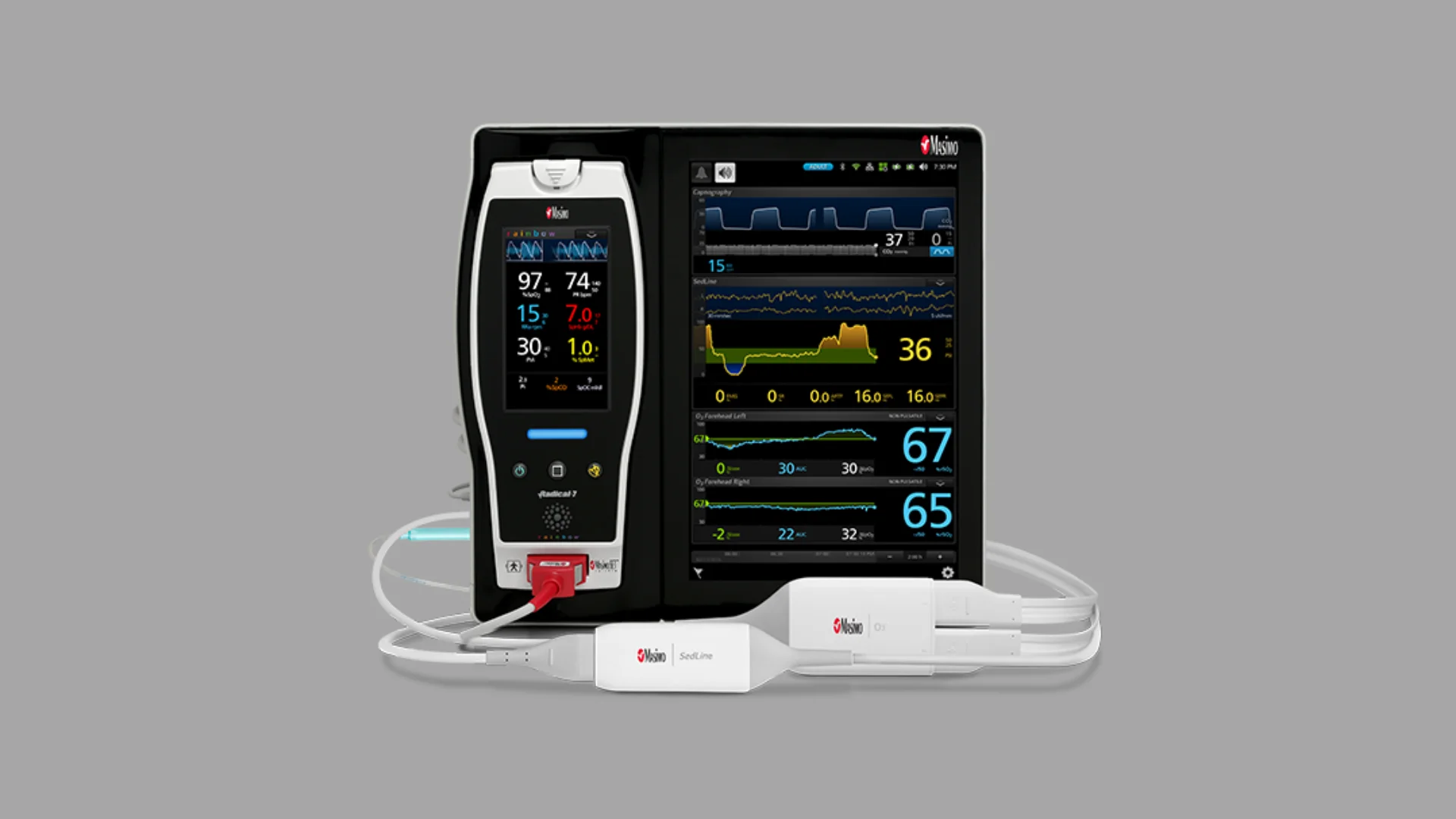
Masimo Radical-7
Sometimes the best monitoring is the least invasive. The Masimo Radical-7 excels at providing advanced insights without additional patient discomfort.
Why it’s revolutionary:
- Rainbow® SET technology: Accurate readings even during motion and low perfusion
- Beyond basic vitals: Measures SpHb® (hemoglobin), SpCO® (carboxyhemoglobin), and more
- Interactive trends: Move, expand, or collapse trend data with simple gestures
- Adaptable display: Automatic rotation based on device orientation
- Multi-environment use: Functions as bedside, handheld, or transport monitor
The ability to noninvasively track hemoglobin can be game-changing for certain patient populations, potentially reducing the need for blood draws while maintaining vigilant monitoring.
For units seeking to minimize invasive monitoring while maximizing patient data, this system offers unique capabilities that deserve attention.
🔗 More details on Masimo Radical-7
Quick Comparison Guide
Here’s a streamlined comparison of key features to help you narrow down your options:
| Feature | Best Options |
|---|---|
| Display Quality | Mindray BeneVision N22, Philips IntelliVue MX750 |
| Transport Integration | Philips X3, Dräger M540, Nihon Kohden Life Scope PT |
| Cybersecurity | Philips IntelliVue MX750 |
| Customization | Nihon Kohden Life Scope G9, Dräger Infinity |
| Cardiac Monitoring | GE CARESCAPE B650, Medtronic LIFEPAK 15 |
| Noninvasive Parameters | Masimo Radical-7 |
| Cost-Effectiveness | Edan iM70, Welch Allyn Connex Spot |
| Durability | Medtronic LIFEPAK 15 |
| EMR Integration | All offer integration, with Philips, GE, and Dräger providing deepest options |
| Alarm Management | Philips IntelliVue MX750, Mindray BeneVision N22 |
Hospital vs. Home Monitoring
If you’re comparing professional monitors to consumer options, here’s what you need to know:
| Feature | Hospital Systems | Home Monitors |
|---|---|---|
| Parameters | Comprehensive (ECG, IBP, EtCO₂, etc.) | Limited (usually BP, HR, SpO₂) |
| Accuracy | Hospital-grade precision | Variable accuracy |
| Connectivity | Hospital networks, EMR integration | Bluetooth, Wi-Fi to smartphones |
| Cost | $10,000-$50,000+ | $100-$2,000 |
| Support | 24/7 technical support | Limited customer service |
| Intended Users | Healthcare professionals | Patients and caregivers |
Making the Right Choice
When selecting a patient monitor, keep these factors top of mind:
- Clinical Requirements: What parameters do your patients actually need?
- IT Infrastructure: Will it integrate with your existing systems?
- Alarm Philosophy: How does it help manage alarm fatigue?
- Patient Flow: How well does it handle patient transfers?
- Staff Familiarity: How intuitive is the interface for your team?
- Future Needs: Can it adapt as clinical practices evolve?
- Security Standards: Does it meet your IT security requirements?
Remember, the best monitor isn’t necessarily the one with the most features – it’s the one that best supports your specific clinical workflows and patient population.
Your Questions Answered
What's the difference between continuous and intermittent monitoring?
What standard parameters are monitored in critical care?
The core vital signs are just the beginning. Standard ICU monitoring typically includes: ECG (heart rhythm and rate), SpO₂ (oxygen saturation), NIBP (non-invasive blood pressure), respiratory rate, temperature, and EtCO₂ (end-tidal carbon dioxide) for ventilated patients.
Many units also add invasive blood pressure (IBP), cardiac output (CO), and specialized parameters based on patient needs.
How do wireless and telemetry monitors work?
Think of them as sophisticated radio systems. Patients wear small transmitters connected to sensors that broadcast vital signs data to receiving stations. Modern systems can cover entire hospital floors, with strategically placed antennas ensuring signal coverage.
This allows monitored patients to move freely while maintaining continuous surveillance – especially valuable for cardiac patients who benefit from ambulation but need ongoing monitoring.
What is the typical lifespan of a hospital-grade patient monitor?
Plan for 7-10 years, though physical hardware may last longer. The limiting factors are usually software updates, compatibility with newer systems, and replacement part availability.
Many hospitals adopt a rolling replacement strategy, upgrading 10-15% of their fleet annually to spread costs while keeping technology current. Modular systems often have longer functional lifespans since components can be upgraded individually.
How do hospitals manage alarm fatigue with patient monitors?
It’s a multi-faceted approach:
- Smart alarms that analyze multiple parameters before triggering
- Customized thresholds for individual patients
- Tiered alarm systems distinguishing urgent from advisory alerts
- Regular review of alarm settings
- Visual indicators to reduce noise
- Central monitoring stations with appropriate delegation
- Data analysis to identify improvement opportunities
The goal is ensuring critical situations get immediate attention while minimizing unnecessary interruptions.
Are portable patient monitors as accurate as fixed bedside models?
High-quality portables (like the Philips X3 or Dräger M540) maintain the same accuracy standards as their fixed counterparts. The difference isn’t in measurement accuracy but typically in parameter range and battery life.
Environmental factors and patient movement affect both types equally. Regulatory standards ensure clinical reliability regardless of form factor.
How do hospitals integrate patient monitors with Electronic Medical Records?
Through several methods:
- Direct HL7 interfaces transmitting vital signs automatically
- Middleware systems that collect, verify, and route data
- Vendor-specific platforms like Philips IntelliSpace or GE CARESCAPE Network
- API-based connections for modern systems
The depth varies from simple vital signs transfer to bidirectional information flow with medication verification and decision support. Advanced integrations even allow viewing waveforms directly within the EMR.
What certification standards should hospital patient monitors meet?
The essential certifications include:
- FDA clearance (US) or equivalent national approval
- IEC 60601-1 (electrical safety)
- IEC 60601-1-2 (electromagnetic compatibility)
- IEC 80001 (IT network risk management)
- ISO 13485 (quality management)
- HIPAA compliance (US data security)
Specific parameters often have additional standards, like ANSI/AAMI EC13 for cardiac monitors.
How does artificial intelligence factor into modern patient monitoring?
AI is transforming monitors from passive displays into proactive clinical tools through:
- Predictive analytics identifying subtle trends before conventional alarms trigger
- Automated ECG interpretation and arrhythmia detection
- Intelligent alarm systems reducing false positives
- Early warning scoring systems combining multiple vital signs
- Automated documentation assistance
- Resource optimization in high-volume settings
While not universal yet, AI capabilities represent the next frontier in patient monitoring.
What considerations are important when selecting monitors for specialty units?
Each specialty has unique requirements:
Neonatal ICU needs specialized algorithms for tiny patients, highly sensitive SpO₂ monitoring, and minimal blood sampling requirements.
Burn Units require non-contact monitoring options and exceptional infection control features.
Neurology/Neurosurgery departments need EEG capabilities, ICP monitoring, and cerebral oximetry.
Cardiac Units benefit from advanced arrhythmia detection, ST-segment analysis, and hemodynamic monitoring.
Operating Rooms require anesthesia machine integration, multi-gas analysis, and depth of anesthesia monitoring.
Emergency Departments need rapid deployment, durability, and quick patient turnover capabilities.
Always involve clinical specialists from these departments in the evaluation process to ensure their unique needs are addressed.